RQA Indicator Spotlight: Residential Real Estate Permits
This month the economic indicator spotlight focuses on the real estate market, specifically the trend in new residential building permits. The dataset is used to evaluate the level of demand for building new housing units, which has a close relationship to broader economic growth. As we can see below, September exhibited a sharp decline in the year-over-year percentage change in permits. The cause in this downward shift in the year-over-year measure is tied to a rapid increase in mortgage rates and interest rates in general. As asset prices continue to adjust to the significant rise in interest rates, the effects are starting to be felt more broadly within the fundaments of the real estate market.
When reviewing the longer-term trends in new building permits, we can note the sharp uptick associated with the post-COVID period and gradual decline since then. We can also note the last significant decline when the housing bubble collapsed going into the global financial crisis in 2008. Lastly, we can see how the annual changes within the dataset coincide with broader economic strength and weakness exhibited by the grey highlighted portions, which demark U.S. recessionary periods.
When building permits for new housing units soften, it has been an indication that broader economic growth may be softening, as well. As such, the latest readings from this fundamental leading indicator are something to keep an eye on, as we work through this cycle of monetary and economic tightening.
Economic Forecast Model
As presented below, the RQA Economic Forecast Model paints a fairly stagnant economic picture of the U.S. economy with no real signs of significant expansion or contraction. More specifically, the economic model (which represents a measure of standard deviation around the zero-growth line) at the end of September ended precisely at 0.00. We can note the trend has deteriorated from the recent growth exhibited immediately following the COVID pandemic, but latest readings have been around the zero or simply no-growth line.
The RQA Economic Forecast Model represents a consolidated composite of key economic leading indicators and market-based explanatory variables. The goal of this composite model is to present a holistic measure of primary U.S. economic growth drivers and their trends over time. (Additional detail on the model’s construction is provided here.)
Values above the zero-line are indicative of positive U.S. economic growth expectations in the near-term, and therefore, indicate economic strength and lesser chance of recessionary pressure. On the other hand, values below the zero-line represent the opposite - a more negative outlook and more elevated probabilities of the U.S. experiencing an economic contraction.
TAKING A CLOSER LOOK AT THE ECONOMIC DRIVERS
In the economic heatmap below, we are able to peak under the hood at a wide mix of underlying growth drivers in the U.S. economy. By reviewing this underlying data in more detail, we are better able to see how the underlying components of the U.S. economic growth picture are behaving through time. It is important to note that the indicators presented below have each proven to have predictive qualities in estimating the future direction of U.S. economic growth.
As we can see above, the trends across many economic data points continue to soften as the economy cools down from the ongoing monetary tightening conditions. As these drivers of growth continue to pull back, we can still point out bright spots which suggests growth can continue in the near-term. Specifically, on the positive side, commercial output figures still point to a growing economy, while the labor market remains very strong and resilient. As it relates to the robustness within the labor market, historically the unemployment rate has increased in the months prior to official economic recessions. If we look at current trends, the U.S. unemployment rate has declined from 4.0% in January of this year to 3.5% in the most recent September reading.
On the negative side, as noted above, new building permit data along with financial and investor sentiment data continue to suggest overall economic growth is softening. Additionally, the yield curve as measured by the slope between the 2-year and 10-year treasuries remains negative, or inverted, which has historically preceded periods of low growth and periods of economic contraction.
MARKET REGIME DISCUSSION
Given the latest trends in inflation and economic forecast data, the U.S. market sits on the line between inflationary boom (top right quadrant) and stagflation (top left quadrant). As growth trends have declined with the tightening of monetary conditions, official growth figures for the economy have yet to contract. Going forward, it will be important to monitor the labor market for any signs of weakness and keep an eye on the overall economic output as measured using various leading indicators to help determine if and when we migrate from inflationary boom to stagflation.
We can use the regime diagram below to help us identify more optimal assets given the anticipated growth and inflation dynamics over the near-to-intermediate future - and in this current environment, we would tend to lean more toward the top two quadrants. Additionally, due to recent trends towards stagflation, it is our expectation that fundamental pressures will lean more favorably toward precious metals, commodities, and international assets.






